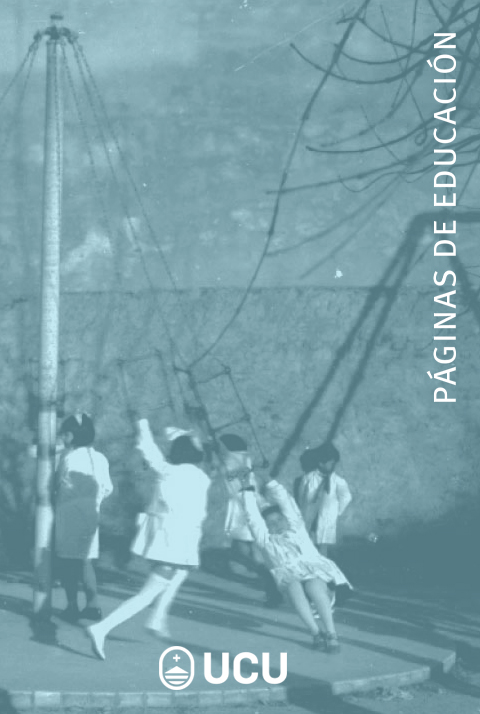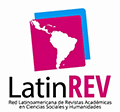Psychometric Evidence of the Self-Efficacy Inventory for Multiple Intelligences-Revised (IAMI-R) in Peruvian Adolescents
DOI:
https://doi.org/10.22235/pe.v17i2.3862Keywords:
Self-efficacy, multiple intelligences, adolescence, high school student, psychometricsAbstract
This instrumental design study examines the validity and reliability evidence of the IAMI-R in Peruvian adolescents. A total of 486 fifth-year high school students (44.03 % male and 55.97 % female) from schools in Chiclayo (65.43 %) and Cajamarca (34.57 %), Peru, participated in the study. The participants were aged between 15 to 17 years (M = 16.23; SD = 0.62). The internal structure was evaluated using confirmatory factor analysis (CFA), and reliability was assessed through omega and ordinal alpha coefficients. CFA with the WLSMV estimator was applied to test the model of eight correlated factors, revealing adequate fit indices: X²(1052) = 1786.25, p < .001, CFI = .96, TLI = .96, RMSEA [90% CI] = .04 [.035-.041], and SRMR = .05. The reliability indices ranged from .82 to .91. Significant differences were found in the self-efficacy perceptions for logical-mathematical, bodily-kinesthetic, interpersonal, intrapersonal, and spatial intelligences, with males rating themselves as more capable than females. The results and implications of the study are discussed.
Downloads
References
Ajeng, H., Winarni, R., & Yamtinah, S. (2020). Self-Efficacy in Scientific Literacy Student Ability Based on Gender. Atlantis Press, 727-734. https://doi.org/10.2991/assehr.k.200129.091
Aliaga, J., Ponce, C., & Salas, E. (2018). Análisis psicométrico del Inventario de Autoeficacia para las Inteligencias Múltiples-Revisado (IAMI-R) en estudiantes peruanos de nivel secundario. Propósitos y Representaciones, 6(2), 63-124. http://dx.doi.org/10.20511/pyr2018.v6n2.249
American Psychological Association. (2017). Ethical principles of psychologists and code of conduct (2002, enmendado con vigencia a partir del 1 de junio de 2010 y el 1 de enero de 2017). http://www.apa.org/ethics/code/index.html
Arandia, M., Llanos, E., Romero, L., Salinas, P. y Contreras, R. (2014). Validación del inventario de autoeficacia para inteligencias múltiples (IAMI) en estudiantes de tercero y cuarto de secundaria de la ciudad de Sucre, con fines de orientación vocacional (1ª ed.). Ecorfan. https://www.ecorfan.org/bolivia/handbooks/ciencias%20sociales%20I/Articulo%2030.pdf
Asghar, A., Shateri, K., Amini, M. & Shokrpour, N. (2020). Relationships between academic self-efficacy, learning-related emotions, and metacognitive learning strategies with academic performance in medical students: a structural equation model. BMC Medical Education, 20, 76. https://doi.org/10.1186/s12909-020-01995-9
Ato, M., López, J. J., & Benavente, A. (2013). Un sistema de clasificación de los diseños de investigación en psicología. Anales de Psicología, 29(3), 1038-1059. https://dx.doi.org/10.6018/analesps.29.3.178511
Baji, M. (2020). Analysis of gender difference in academic self-efficacy and achievements among senior secondary school students in niger state, Nigeria. PEOPLE: International Journal of Social Sciences, 5(3), 659-675. https://doi.org/10.20319/pijss.2020.53.659675
Bandura, A. (1986). Social foundations of thought and action: A social cognitive theory. Prentice-Hall.
Bandura, A. (1997). Self-Efficacy: The Exercise of Control. Worth Publishers.
Bandura, A. (2006). Guide for constructing self-efficacy scales. En F. Pajares & T. Urdan (Eds.), Self-efficacy beliefs of adolescents (Vol. 5, pp. 307-337). Information Age Publishing.
Bhati, K., & Sethy, T. (2022). Self-Efficacy: Theory to Educational Practice. International Journal of Indian Psychology, 10(1), 1123-1128. https://ijip.in/articles/self-efficacy-theory-to-educational-practice/
Blanchette Sarrasin, J., Riopel, M. & Masson, S. (2019), Neuromyths and Their Origin Among Teachers in Quebec. Mind, Brain, and Education, 13, 100-109. https://doi.org/10.1111/mbe.12193
Cejudo, J., Losada, L. & Pérez, J. (2017). Inteligencias múltiples y su relación con inteligencias cognitiva y emocional en adolescentes. Universitas Psychologica, 16(3). https://doi.org/10.11144/Javeriana.upsy16-3.imri
Doménech-Betoret, F., Abellán-Roselló, L. y Gómez-Artiga, A. (2017). Self-Efficacy, Satisfaction, and Academic Achievement: The Mediator Role of Students' Expectancy-Value Beliefs. Frontiers In Psychology, 8, 1193. https://doi.org/10.3389/fpsyg.2017.01193
Domínguez-Lara, S. (2017). Magnitud del efecto, una guía rápida. Educación Médica, 19(4), 250-251. https://doi.org/10.1016/j.edumed.2017.06.003
Domínguez-Lara, S., & Merino-Soto, C. (2019). Estimación de la magnitud del efecto en invarianza de medición. Avaliação Psicológica, 18(3), 328-332. http://dx.doi.org/10.15689/ap.2019.1803.16248.13
Ferrando, J., & Anguiano-Carrasco, C. (2010). El análisis factorial como técnica de investigación en psicología. Papeles del Psicólogo, 31(1), 18-33. https://www.redalyc.org/pdf/778/77812441003.pdf
Freiberg, A., Stover, J., De la Iglesia, G., & Fernández, M. (2013). Correlaciones policóricas y tetracóricas en estudios factoriales exploratorios y confirmatorios. Ciencias Psicológicas, 7(2), 151-164. http://www.scielo.edu.uy/scielo.php?script=sci_arttext&pid=S1688-42212013000200005
Gardner, H. (1994). Estructura de la mente: Teoría de las inteligencias múltiples. Fondo de Cultura Económica.
Gardner, H. (1999). Intelligence reframed: Multiple intelligences for the 21st century. Basic Books.
Kline, R. (2023). Principles and Practice of Structural Equation Modeling. (5a ed.). The Guilford Press.
Korkmaz, S., Goksuluk, D., & Zararsiz, G. (2014). MVN: An R Package for Assessing Multivariate Normality [Software]. https://journal.r-project.org/archive/2014-2/korkmaz-goksuluk-zararsiz.pdf
Mamnoun, S., Nfissi, A., & Naguim, M. (2023). Students’ Perceived Academic Self-Efficacy by Gender and Subject Domain. Journal of Gender, Culture and Society, 3(1), 57-65. https://doi.org/10.32996/jgcs.2023.3.1.6
Mardia, K. V. (1970). Measures of multivariate skewnees and kurtosis with applications. Biometrika, 57(3), 519-530. https://doi.org/10.2307/2334770
Maureira, F. (2018). Relación de la inteligencia con la personalidad, funciones ejecutivas y creatividad: Una revisión del 2000 al 2017. Revista Electrónica de Psicología Iztacala, 21(4), 1453-1474. https://www.revistas.unam.mx/index.php/repi/article/view/68025
Meng, Q., & Zhang, Q. (2023). The Influence of Academic Self-Efficacy on University Students’ Academic Performance: The Mediating Effect of Academic Engagement. Sustainability, 15(7), 5767. https://doi.org/10.3390/su15075767
Multon, K., Steven, B., & Lent, R. (1991). Relation of Self-Efficacy Beliefs to Academic Outcomes: A Meta-Analytic Investigation. Journal of Counseling Psychology, 38(1), 30-38. https://doi.org/10.1037/0022-0167.38.1.30
Navarro, G., Flores-Oyarzo, G., & González, M. (2018). Inventario de Autoeficacia para Inteligencias Múltiples Revisado (IAMIR) en una muestra de estudiantes de Concepción, Chile: Percepción de autoeficacia para los diferentes tipos de inteligencia. Revista de Estudios y Experiencias en Educación, 17(35). https://doi.org/10.21703/rexe.20181735navarro3
Pereyra, C., Ronchieri, C., Rivas, A., Trueba, D., Mur, J. y Páez, N. (2018). Autoeficacia: Una revisión aplicada a diversas áreas de la psicología. Ajayu Órgano de Difusión Científica del Departamento de Psicología UCBSP, 16(2), 299-325. http://www.scielo.org.bo/pdf/rap/v16n2/v16n2_a04.pdf
Pérez, E., & Cupani, M. (2008). Validación del inventario de autoeficacia para inteligencias múltiples revisado (IAMI-R). Revista Latinoamericana de Psicología, 40(1), 47-58. http://www.scielo.org.co/pdf/rlps/v40n1/v40n1a04.pdf
Pérez, E., Beltramino, C., & Cupani, M. (2003). Inventario de Autoeficacia para Inteligencias Múltiples: Fundamentos Teóricos y Estudios Psicométricos. Evaluar, 3. https://revistas.unc.edu.ar/index.php/revaluar/article/download/606/575/2087
Pérez, L., & Beltrán, J. (2006). Dos décadas de “inteligencias múltiples”: implicaciones para la psicología de la educación. Papeles del Psicólogo, 27(3), 147-164. https://papelesdelpsicologo.es/pdf/1372.pdf
Pérez, R., & Medrano, L. (2007). Inventario de autoeficacia para inteligencias múltiples revisado: Un estudio de validez de criterio. Avances en Medición, 5, 105-114. https://dialnet.unirioja.es/servlet/articulo?codigo=2981072
Revelle, W. (2023). psych: Procedures for Psychological, Psychometric, and Personality Research (R package version 2.3.6) [Software]. Northwestern University. https://CRAN.R-project.org/package=psych.
Robbins, S. B., Lauver, K., Le, H., Davis, D., Langley, R., & Carlstrom, A. 2004. Do psychosocial and study skill factors predict college outcomes? A meta-analysis. Psychological bulletin, 130(2), 261-288. https://doi.org/10.1037/0033-2909.130.2.261
Robinson, K., Pérez, T., White-Levatich, A., & Linnenbrink-García, L. (2020). Gender Differences and Roles of Two Science Self-Efficacy Beliefs in Predicting Post-College Outcomes. The Journal of Experimental Education, 90(2), 344-363. https://doi.org/10.1080/00220973.2020.1808944
Rodríguez, M., & Ruiz, M. (2008). Atenuación de la asimetría y de la curtosis de las puntuaciones observadas mediante transformaciones de variables: Incidencia sobre la estructura factorial. Psicológica, 29(2), 205-227. https://www.redalyc.org/pdf/169/16929206.pdf
Rosseel, Y., Jorgensen, T., Rockwood, N., Oberski, D., Byrnes, J., Vanbrabant, L., Savalei, V., Merkle, E., Hallquist, M., Rhemtulla, M., Katsikatsou, M., Barendse, M., Sachrf, F., & Du, H. (2023). lavaan: Latent Variable Analysis Versión 0.6-16) [Software]. https://cran.r-project.org/web/packages/lavaan/index.html
Rousseau, L. (2021). "Neuromyths" and Multiple Intelligences (MI) Theory: A Comment on Gardner, 2020. Frontiers in psychology, 12, 720706. https://doi.org/10.3389/fpsyg.2021.720706
Ruiz, F. (2005). Relación entre la motivación de logro académico, la autoeficacia y la disposición para la realización de una tesis. Persona, 8(008), 145-170. https://doi.org/10.26439/persona2005.n008.898
Schunk, D. H. (1991). Self-efficacy and academic motivation. Educational Psychologist, 26, 207-231. https://doi.org/10.1207/s15326985ep2603&4_2
Shoflah, V., Taruna, R., & Kurnlawaty, Y. (2023). Academic Self-Efficacy as A Mediator on The Relationship Between Academic Motivation and Academic Achievement of College Students During the Online Learning Period. International Journal of Islamic Educational Psychology, 4(1). https://doi.org/10.18196/ijiep.v4i1.18247
Suárez, J., Maiz, F., & Meza, M. (2010). Inteligencias múltiples: Una innovación pedagógica para potenciar el proceso enseñanza aprendizaje. Investigación y Postgrado, 25(1), 81-94. http://ve.scielo.org/scielo.php?script=sci_arttext&pid=S1316-00872010000100005
Velásquez, A. (2012). Revisión histórico-conceptual del concepto de autoeficacia. Revista Pequén, 2(1), 148-160. https://revistas.ubiobio.cl/index.php/RP/article/view/1838
Waterhouse, L. (2023). Why multiple intelligences theory is a neuromyth. Frontiers in Psychology, 14, 1217288. https://doi.org/10.3389/fpsyg.2023.1217288
West, R. (2021). Best practice in statistics: Use the Welch t-test when testing the difference between two groups. Annals of Clinical Biochesmistry: International Journal of Laboratory Medicine, 58(4), 267-269. https://doi.org/10.1177/0004563221992088
Whittaker, T., & Schumacker, R. (2022). A beginner’s guide to Structural Equation Modeling. (5a ed.). Routledge Taylor & Francis Group.
Zarza-Alzugaray, F. J., Bustamante, J. C., Casanova, O., & Orejudo, S. (2018). La autoeficacia creativa y la autoestima como predictores de la capacidad creativa en estudiantes universitarios. Reidocrea, 8, 7-14. https://www.ugr.es/~reidocrea/8-2.pdf
Zimmerman, B. (2000). Self-Efficacy: An Essential Motive to Learn. Contemporary Educational Psychology, 25, 82-91. https://doi.org/10.1006/ceps.1999.1016
Published
How to Cite
Issue
Section
License
Copyright (c) 2024 Páginas de Educación

This work is licensed under a Creative Commons Attribution 4.0 International License.















